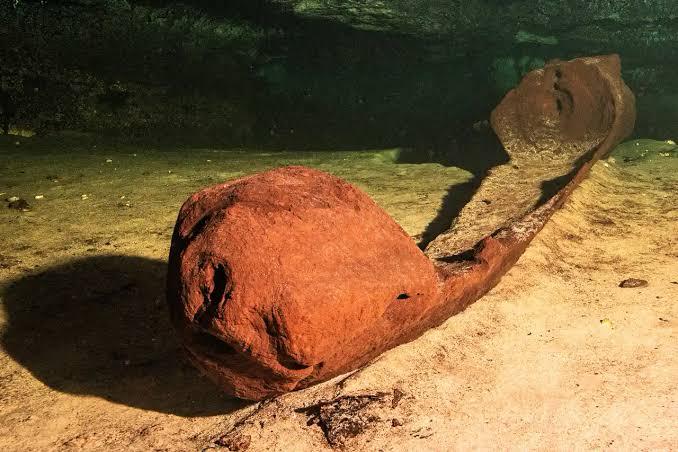More than a hundred underwater treasures found in flooded caves, cenotes, rivers, lagoons, and karst systems in the southeast during the construction of the Mayan Train will be exhibited this year in the new Great Museum of Chichén Itzá and that of the Eastern Coast in Tulum.
“We found a stele, censers, knives, ornaments, seals, seals with fretwork, vessels, moldboards, offerings, ceramic and lithic pieces, as well as furniture, structures, and several dozen archaeological elements,” said researcher Helena Barba Meinecke.
The researcher, head of the Yucatan Peninsula Office of the Subdirectorate of Underwater Archeology of the National Institute of Anthropology and History (INAH), indicated that they will exhibit unpublished pieces discovered during the construction of the Mayan Train.
“Other artifacts will be exhibited so that they understand that prehistory begins in the Yucatan Peninsula when it was underwater and how it evolved through the Mayans and the Caste War,” he revealed.
Helena Barba recalled that underwater archeology work began in 2020 “in the middle of the pandemic” with the verification of Lidar (laser scanner) flights on the sections of the Mayan Train.
The team prospected caves, cenotes, and karst systems, that is, systems with limestone formation.
“In less than two years we did four times more than what was done in 10 years because the budgets that the INAH had for exploration in karst systems, caves, and cenotes were very low,” he said.
Among the underwater treasures discovered, a canoe found in a flooded cave in the community of San Andrés, near Valladolid, stands out.

“It is the first of its kind since canoes had already been found in caves in Oaxaca and other places in the Mayan area, but never inside an underwater cave,” commented Helena Barba.
The San Andrés canoe may be associated with a human burial, “possibly female,” since at the site there are remains of bones, and elements used by animals such as armadillo and eagle that have to do with the Mayan worldview.
“The canoe was not made for sailing, but as a ritual offering to request rain or something related to agriculture,” he explained. The canoe will remain submerged because if they try to “extract the canoe without consideration for its conservation, it will begin to deteriorate in minute one.” Added to this discovery, in the same place near Chichén Itzá, was a 50-meter-deep well inside which there were skeletons and offerings.
TYT Newsroom


